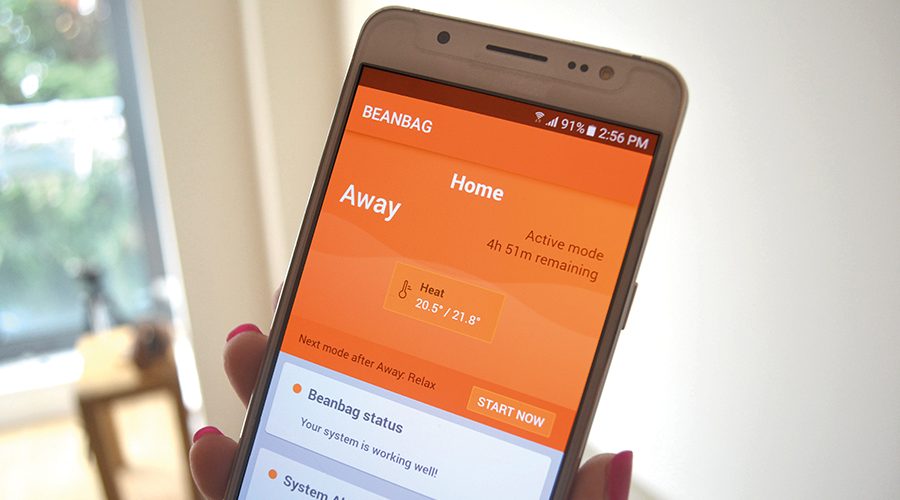Here, Nigel Ebdon, Market Development Manager at property tech specialist Secure Meters UK, discusses the Homes Act, what it will mean for tenants and landlords, and how new technologies can improve home environments and help to protect social landlords against the risk of increased disrepair claims.
Secure Meters UK
The Homes (Fitness for Human Habitation) Act is new, beefed up legislation designed to ensure that private and social rented accommodation is up to
defined standards.
The act gives tenants more power against landlords who do not fulfil their legal obligations to keep properties safe from hazards such as cold and poor
air quality.
The act is an amendment of the Landlord and Tenant Act 1985. It states there is an implied agreement between the tenant and landlord at the beginning of the tenancy that the property will be maintained to a certain standard meaning that it is fit for human habitation.
The act gives tenants the ability to hold their landlord to account without having to rely on often over stretched, under resourced local authorities.
In the past, local authorities would have to intervene on behalf of tenants to enforce property standards, or bring private prosecution in magistrate courts which was often prohibitively costly and complex.
What tenancies does it apply to?
The Homes Act applies to all new tenancies, private and social, which started on or after the 20th of March 2019.
It also applies to tenancies that began as a fixed term before the 20th of March 2019 but become a periodic tenancy after the commencement date, so technically the act will apply to nearly all tenancies in existence from 20 March 2020.
What does it mean?
For a property to be fit for human habitation, landlords need to ensure that it is free of hazards that make the home not reasonably suitable for occupation. The act uses the 29 hazards currently listed in the Housing Health and Safety Rating system (HHSRS), and these are categorised by seriousness.
Category areas that could be of particular concern to social landlords are:
- Is there a serious problem with damp, and is this causing mould in the property?
- Is there adequate natural light in the home?
- Is there adequate ventilation?
- Is there a problem with the supply of hot and cold water?
- Is the property too hot or too cold?
What does this mean for social landlords?
With responsibility for thousands of properties, the new legislation creates specific challenges for social landlords. These will include ensuring that their homes meet the specified standards, quickly identifying those that aren’t – and importantly understanding why and who was responsible for any persistent failings.
Law and claims firms are already aggressively targeting social homes and tenants to gather potential claims, and landlords fear that a significant number of disrepair claims could start flooding in within a year.
This could prove extremely costly for housing providers, because even if they aren’t found in breach of standards, the cost of processing and fighting claims will be an added financial burden.
Damp and mould claims can be particularly troublesome to decipher, as without real-time evidence it’s difficult to understand the source of high humidity.
What landlords need is a remote way of monitoring and recording that all homes are up to the new specified standard. Granular, usable data on home environments.
Home sensors – usable data
Remote home sensors and internet of things solutions are now delivering just that capability to landlords – along with a host of other benefits.
Home sensors can monitor various aspects of the home environment, including damp, air quality, temperature and humidity in real-time.
This data can then be automatically processed or organised in a usable or ‘granular’ way – highlighting specific issues and courses of action before
they become a health risk for tenants or damage the fabric of the property.
By identifying issues early, landlords can ensure that homes remain at the required standard as specified by the Homes Act, providing a more comfortable home environment for tenants.
Where there are persistent problems, such as high humidity and mould growth, sensors can be used to decipher the cause enabling landlords to work with tenants on finding an ongoing solution, but in the face of litigation, this data can also be used as evidence to support a landlord’s case.
Common issues such as boiler faults can also be assessed remotely and more accurately. Landlords can test heating systems and set minimum and maximum temperatures all without having to visit a tenant’s home. If a home is over or under heated then data can be used to understand the reasons why, so that an appropriate intervention can be made.
Gaining access to properties can be a costly and frustrating issue for repairs and maintenance teams, therefore remote testing can provide a significant cost saving, improves customer service and assists in improving business efficiency.
To summarise, although landlords can use the data derived from home sensors to prove the delivery of the required, new home standards (and ultimately protect themselves from litigation), in my mind both sensors and the Homes Act are aiming for the same fundamental outcome: protecting tenants by ensuring that that rented homes remain at a consistently high standard.









